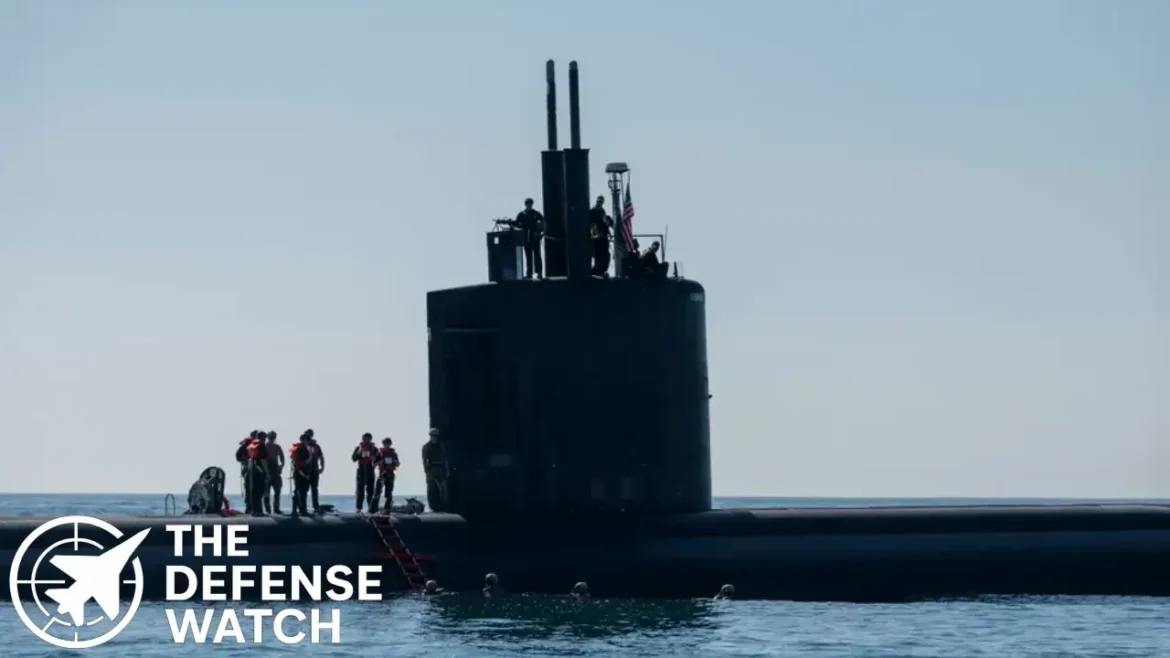When the U.S. Navy’s elite Naval Special Warfare operators conduct underwater operations beneath the vast Pacific Ocean, their training—and execution—must mesh flawlessly with submarine platforms, stealth techniques, and high-end contingency warfare. In this article, we explore how navy seals submarine training pacific works in practice, examine underwater operations and submarine insertion techniques, and place this specialized capability into broader naval special warfare strategy.
The Strategic Value of Submarine-Based Insertion
SEALs operating from submarines represent one of the most clandestine forms of force projection. A submarine can covertly carry special operators close to denied coastlines or under contested areas, minimizing exposure to enemy surveillance or anti-access systems. This capability is especially important in the Indo-Pacific, where China’s anti-access / area denial (A2/AD) networks pose serious challenges to traditional naval approaches.
A recent example underscores this trend: SEALs conducted training with the Los Angeles–class attack submarine USS Greeneville in the Pacific. In that exercise, operators parachuted from aircraft into the ocean and then rendezvoused with the submarine via inflatable combat boats—a complex ballet of air, surface, and subsurface elements.
By refining joint interoperability with submarines, Naval Special Warfare (NSW) ensures that special operations remain an integral enabler in future great power contention.
Training Regime: From BUD/S to Submersible Teams
BUD/S: Foundational Training
All SEAL candidates begin with Basic Underwater Demolition/SEAL (BUD/S), a grueling six-month pipeline in Coronado, California. BUD/S emphasizes physical conditioning, mental resilience, water competence, and teamwork. Breakout phases include:
- Phase 1: Physical conditioning, endurance, surf passage, running and calisthenics.
- Phase 2: Dive phase—combat swimming, breath-hold dives, underwater navigation, and long-distance submerged swims.
- Phase 3: Land warfare, small-unit tactics, demolitions, and insertion/extraction techniques.
Those who pass then go through SEAL Qualification Training (SQT) to earn their Trident insignia, before assignment to SEAL teams or SEAL Delivery Vehicle (SDV) squadrons.
SDV / Midget Submersible Teams
Specialized SEAL Delivery Vehicle (SDV) teams train for the specific challenge of submarine-based underwater insertion. The SDV is a wet submersible in which operators ride in flooded compartments using breathing gear.
Historically, SDVs deploy from a host submarine’s Dry Deck Shelter—a pressurized chamber perched exterior to the sub’s hull through which the SDV is launched.
The newer Dry Combat Submersible (DCS) now offers a dry environment, enabling longer mission duration, higher comfort, and enhanced operator readiness. Development reached initial operational capability in 2023. The DCS can lock-in and lock-out operators in pressurized compartments, reducing divers’ exposure to cold or fatigue.
Joint Air-Sea-Sub Integration
The submarine-SEAL coupling demands that NSW operators synchronize with submarine crews, aviation elements, and surface platforms. In the Greeneville exercise, SEALs parachuted into the Pacific, used inflatable raiding crafts to reach prearranged points, and then boarded the sub.
Such integration tests command, control, communications, and timing across domains. Strict procedures govern diver safety, decompression, sub pressure differentials, and emergency aborts—any misstep could be fatal.
Techniques for Underwater Operations & Insertion
Free-Fall Parachute + Sea Swim
One mode of insertion is HALO/HAHO jumps into the open ocean, followed by a swim to rendezvous with a submerged submarine or SDV. This is often used when covert approach by air offers the stealth advantage. In the Greeneville drills, for example, this method was leveraged.
Combat Swimmer Approach
In many scenarios, SEALs physically swim long distances from shore or a mother craft to their objective. This method is used when stealth over short ranges outweighs logistic complexity.
Manned Submersible Transit
The SDV or DCS transports operators covertly under water. At a predetermined point, the sub releases the SEALs via lock-in / lock-out chambers or open-flooded hatches, depending on the platform.
Advantages of submersible transit:
- Reduced exposure to surface surveillance
- Higher speed over distance
- Masking from surface or aerial detection
Challenges:
- Complexity of compatibility between submarine and diver systems
- Decompression risk if transitions are mismanaged
- Communications and coordination with host submarine
Exfiltration & Recovery
SEAL exit may occur via a friendly submarine or surface vessel. The sub might position to accept operator reboarding, or operators may swim to a recovery craft. In all cases, timing and stealth are critical.
Pacific Theater: Unique Operational Considerations
Operating beneath the Pacific imposes distinct environmental and strategic demands:
- Vast distances and deep waters: Missions may span hundreds of nautical miles, requiring endurance, logistics, and support.
- Thermal layers and currents: The Pacific’s thermoclines complicate sonar propagation, diver navigation, and vehicle acoustics.
- Regional surveillance density: Chinese, Russian, or allied A2/AD systems maintain layered detection in key strategic zones. Submarine-SEAL tactics must circumvent sonar, radar, satellite, and UAV coverage.
- Island chains and chokepoints: Places like the First Island Chain, the South China Sea, and Pacific archipelagos offer both insertion opportunities and intense surveillance risk.
- Allied cooperation and basing: Proximity to allied naval infrastructure (e.g. in Australia, Japan, Guam) enables combined drills and prepositioning of assets.
Thus, Pacific submarine insertion training must factor in extended-range logistics, inter-force coordination, and intelligence-driven route planning.
Analysis & Strategic Implications
As the U.S. military pivots back toward peer conflict in the Indo-Pacific, the integration of SEALs with submarine assets is more than a novelty—it’s a necessity. Submarine insertion enables special operations to penetrate heavily surveilled maritime zones where air or surface approaches may be blocked.
Moreover, adversaries are developing countermeasures: unmanned underwater vehicles (UUVs), advanced sonar nets, and acoustic sensor grids. The DCS, in turn, offers greater stealth, endurance, and inertial navigation to stay ahead of detection.
Yet this capability is resource-intensive. Submarine-SEAL teaming demands rigorous training, exacting coordination, and sustained investment—each insertion is a precision choreography of men, machines, and margins.
As regional tensions escalate—Taiwan Strait, South China Sea, Korean Peninsula—the demand for clandestine undersea force projection will likely rise. Mastery of naval special warfare training beneath the waves may well become an asymmetric edge for U.S. and allied navies.
FAQs
An SDV is a wet submersible where operators sit in flooded compartments and use breathing gear. The DCS is a dry, pressurized vehicle allowing operators to remain in a dry environment until exit.
Because the Pacific is the primary theater of strategic competition (e.g., with China), mastering covert submarine insertion there ensures readiness to penetrate contested maritime zones where surface or air may be denied.
They use lock-in / lock-out chambers, gradual pressure normalization, decompression protocols, and dive tables tailored to mission profiles. Meticulous procedures guard against decompression sickness.
No. Only operators assigned to SDV or sub-oriented units train extensively in submarine coupling. General SEAL training covers diving, tactics, and insertion, but not full submarine integration.
Advances may include greater autonomy in UUVs, enhanced communication through acoustics, stealthier submersibles, AI-assisted navigation, and advances in battery / propulsion for longer-duration underwater infiltration.


4 comments
[…] signals more than a symbolic milestone for Jakarta’s defense industry—it reflects a shift in undersea warfare toward unmanned or optionally-manned platforms. Indonesia joins the United States, Russia and China […]
[…] market now.” Arnott said it is “Indo-Pacific relevant ranges,” meaning long-haul over-water operations could be […]
[…] will begin with the next draft cycle and follow a specialized training path. According to the IDF, they’ll receive Rifleman 07 qualification — a standard combat-level […]
[…] no independent confirmation has been released, the claim alone signals a possible shift in how undersea warfare is conducted in contested […]